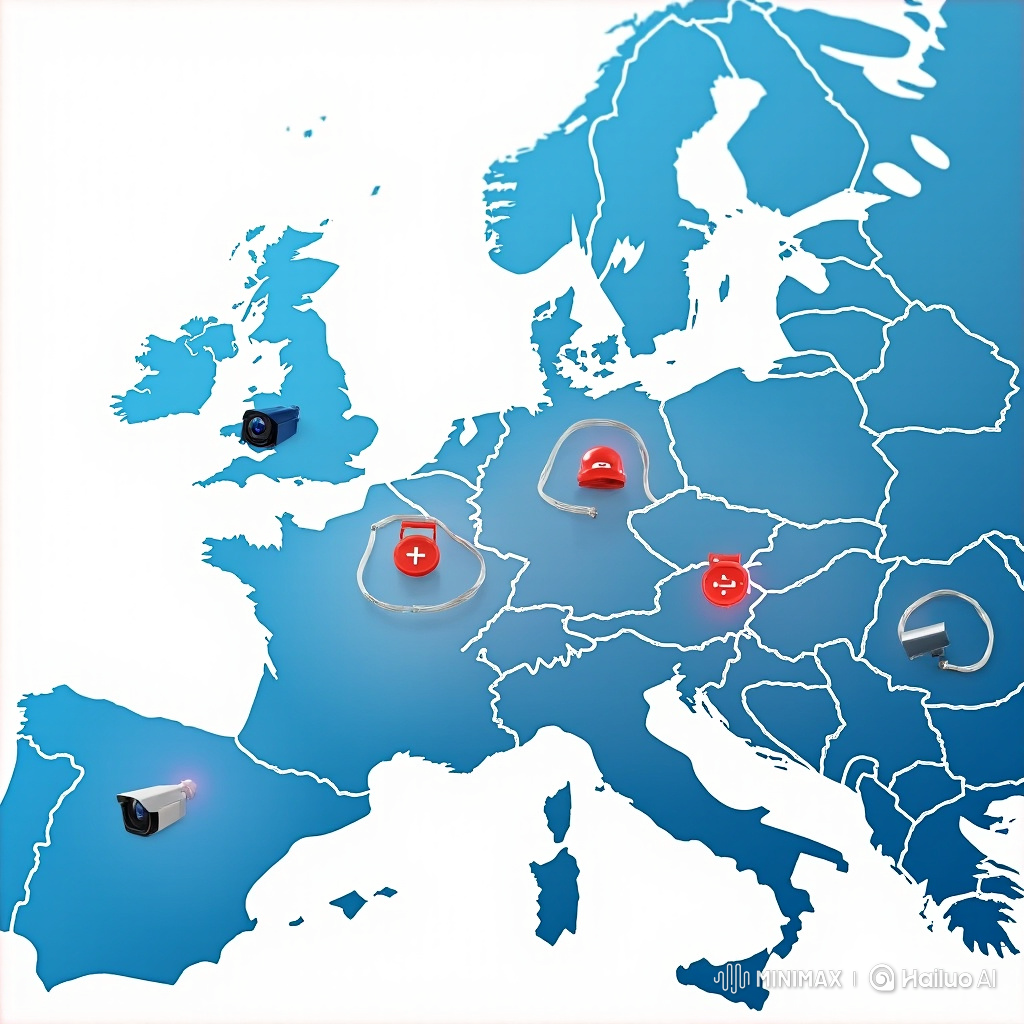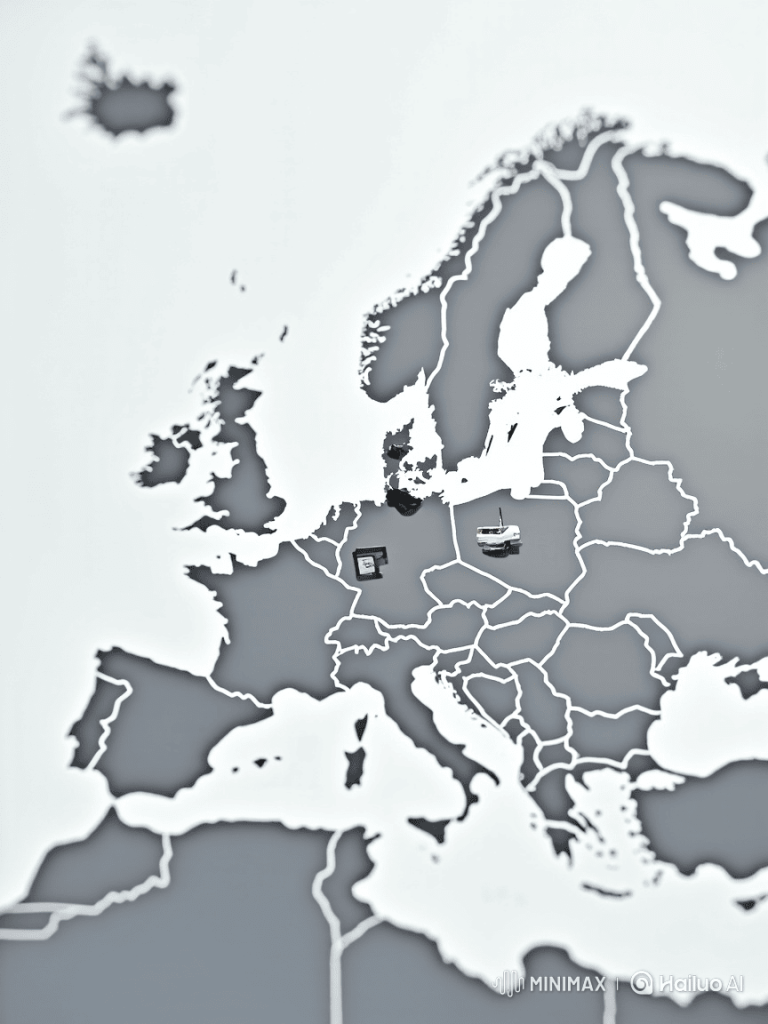Topic of this Post
Toggle
A Region That Demands Engineering Discipline, Not Improvised Security
Northern Europe’s challenges are not limited to technology — they extend to reliability, sustainability, and regulation.
The region’s environments often include freezing temperatures, heavy snowfall, and long hours of low visibility — all of which expose weaknesses in improvised or under-engineered systems.
Local installers may focus on visibility or convenience, placing cameras or alarms for coverage optics, not for risk containment.
EuroTSI’s engineering approach removes improvisation entirely, enforcing a documented, risk-led methodology that ensures systems are justified before they are installed.
Our doctrine in this region is guided by evidence, engineering, and endurance — not assumptions.

Services Delivered Under One Standard Across Northern Europe
EuroTSI does not alter its design philosophy from one country to another. Whether a deployment is in Copenhagen, Helsinki, or Stockholm, our teams apply one engineering standard — the same defensible, documented, and reproducible methodology used across the continent.
Our Standardized Framework Includes:
- CCTV Installation: Designed using cold-resilient housings, low-light sensors, and network-backed recording redundancy.
- Alarm Systems: Integrated escalation protocols with verified signal transmission over redundant cabling.
- Structured Cabling: Installed and tested under EN / ISO compliance for data reliability and weatherproof routing.
- Integrated Systems: Every device — camera, alarm, and network node — engineered as part of a unified ecosystem.
- Lifecycle Management: Each site is maintained and audited with scheduled firmware and compliance updates.
The outcome is not a patchwork of “working systems” — it is a single network of defensible installations, capable of audit and scalable growth.
Enterprise and Residential Applications Served Under Equal Discipline
EuroTSI maintains networks for all types of facilities — large or small.
Northern Europe’s technological maturity demands consistency between enterprise and private-sector applications.
Where others may divide attention between industrial and residential needs, EuroTSI applies the same standard of engineering, documentation, and lifecycle discipline to every project.
Corporate clients gain uniformity across multiple sites, while private properties receive enterprise-grade protection that meets insurance and compliance scrutiny.
Our methodology ensures no compromise between convenience and compliance — the same principles apply to both.
Entities Benefiting From This Framework Include:
- Multi-branch enterprises operating across Nordic countries
- Logistics and transport facilities exposed to extreme conditions
- Maritime and offshore organizations requiring data-secure monitoring
- Data centers and tech campuses with regulated uptime requirements
- Private residential estates seeking certified, auditable installations
Predictability is the foundation of security — and EuroTSI makes that predictability universal.

Why Standardization Matters More in Northern Europe Than Elsewhere
Northern Europe’s infrastructure relies on precision and certification. Systems that cannot document their design, maintenance, or compliance history are not “secure” — they are risks disguised as technology.
EuroTSI eliminates uncertainty by enforcing design logic, traceable installation records, and compliance documentation at every level.
When insurance, regulation, or legal inquiry occurs, EuroTSI’s systems are not just functional — they are provable.
In regions where safety, reliability, and documentation are inseparable, standardization is not an option — it’s survival.
Enterprise and Residential Applications Served Under Equal Discipline
EuroTSI maintains networks for all types of facilities — large or small.
Multi-Location Organizations Benefit Most in This Region
Organizations operating across multiple Nordic cities — from Oslo to Reykjavik — often struggle with vendor fragmentation.
Different installers bring inconsistent practices, documentation, and even incompatible technologies, leading to long-term operational and compliance issues.
EuroTSI solves this through region-wide uniformity, providing:
- Consistent architectural documentation
- Standardized configuration and data logging formats
- Centralized monitoring dashboards
- Coordinated maintenance cycles
Industries That Gain Maximum Advantage:
- Retail and logistics networks
- Renewable energy and maritime operations
- Educational and healthcare systems
- Banking and administrative offices
- Industrial and data infrastructure
Every location inherits the same logic, design, and compliance trace — eliminating rework and ensuring continuity.

Not “We Cover the Region” — We Service It Repeatably
Coverage means little if outcomes cannot be reproduced.
EuroTSI’s Northern Europe operations are designed for repeatability — meaning the same installation standards, documentation templates, and lifecycle reports can be deployed at scale, across borders, without deviation.
Our promise is not geographical reach but methodological consistency — every deployment engineered, recorded, and serviced under the same governance structure.
A site in Reykjavik receives the same quality, documentation, and support as one in Helsinki — that is what defines true regional coverage.
Enterprise and Residential Applications Served Under Equal Discipline
Enterprises operating in Southern Europe require predictability: one method, one report structure, one escalation pattern, one compliance narrative. We deliver this so that a branch opened this year and another added next year inherit the same logic rather than two unrelated systems. Residential deployments in this region also receive enterprise-grade discipline, not informal “freelancer wiring”. The result is that private properties receive security that would survive legal or insurance examination, not only casual usage.
Integration as a Non-Negotiable Condition
In Northern Europe’s interconnected industrial and urban ecosystems, integration is mandatory.
Security cannot exist as isolated systems — CCTV, alarms, and cabling must act as one network.
EuroTSI enforces integration across:
- CCTV-to-alarm verification chains
- Alarm signal routing over structured data networks
- Unified monitoring centers and escalation logic
- GDPR-compliant storage and access management
Integration transforms surveillance from reaction into governance.
Every incident, escalation, and review is backed by data integrity, traceability, and synchronization.
Lifecycle Management Beyond Installation
Northern Europe’s environmental conditions can degrade security systems if neglected — corrosion, condensation, and thermal stress shorten lifecycle integrity.
EuroTSI implements active lifecycle management, ensuring systems remain technically sound years after installation.
Our Maintenance Framework Covers:
- Routine hardware inspections under temperature variance tests
- Firmware and configuration revalidation
- Replacement cycles aligned to lifecycle analytics
- 24/7 support and remote fault monitoring
Security is not defined by the day it’s installed — but by how it performs after years of service.
EuroTSI ensures it performs without decline.
Regional Coverage Without Regional Variation
Northern Europe spans diverse geographies — maritime hubs, frozen frontiers, and densely built capitals — yet EuroTSI’s doctrine does not bend to geography.
Every project, regardless of climate or client type, follows identical documentation, testing, and compliance validation procedures.
Geography changes — rules do not.
That’s the EuroTSI difference.
Request Regional Validation
If your organization plans a security infrastructure project in Northern Europe, or needs to unify scattered legacy systems under a single compliance framework, EuroTSI provides a Regional Validation Assessment — outlining technical feasibility, compliance alignment, and sustainability projections.
📞 Call: +XX-XXX-XXXX
📧 Email: info@eurotsi.com
🌍 Region: Northern Europe — Standardized Deployment
⏱ Response: Within 24 Hours
Security in Northern Europe is not a product — it is a governance discipline.
EuroTSI builds systems not only for operation but for examination and endurance.
